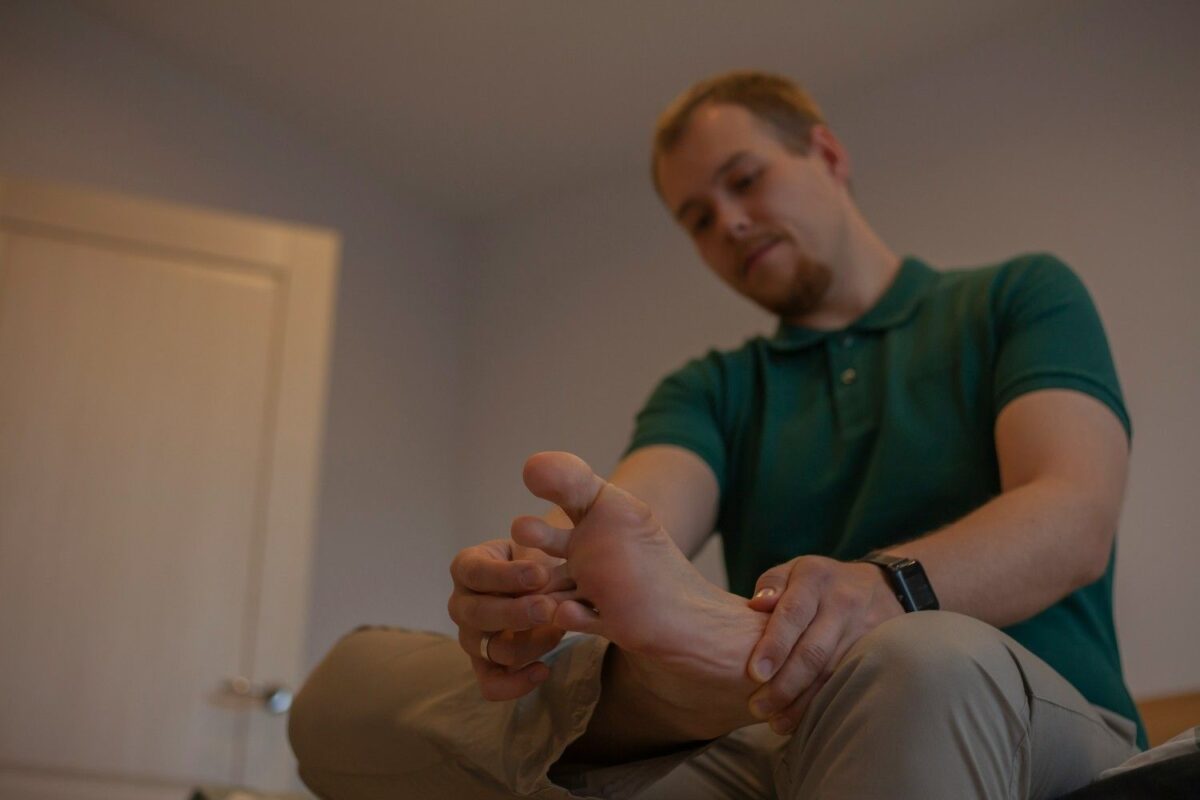Non-Surgical Treatments for Plantar Fibromatosis: What Works?

Introduction
Plantar fibromatosis, also known as Ledderhose disease, is a benign but often painful condition characterized by the development of firm nodules within the plantar fascia. These nodules can make walking uncomfortable, limit activity, and significantly impair quality of life. Though surgical excision may be indicated for severe cases, many patients and clinicians prefer exploring non‑surgical options first. In recent years, there has been growing interest in investigational treatment for Plantar Fibromatosis, including novel therapies that aim to reduce nodule size and alleviate symptoms without invasive procedures. In this comprehensive guide, we’ll explore the spectrum of non‑surgical treatments for plantar fibromatosis, examining which approaches offer real relief and why a personalized, multimodal strategy often works best.
Understanding Plantar Fibromatosis
Etiology and Pathophysiology
Plantar fibromatosis arises from a localized proliferation of fibroblasts within the plantar aponeurosis. While the exact trigger remains unclear, it mirrors the pathology of Dupuytren’s contracture in the hand, suggesting shared genetic or microvascular factors. Early nodules tend to be slow‑growing and may remain asymptomatic for months or years before causing discomfort during weight‑bearing activities.
Epidemiology and Risk Factors
Although precise incidence data are scarce, plantar fibromatosis is classified as a rare disease in the United States, affecting fewer than 200,000 individuals. Estimates suggest it occurs in less than one in 20,000 people overall. Middle‑aged and older adults are most commonly affected, with bilateral involvement reported in about 25–50% of cases. Men develop the condition more frequently than women, and additional risk factors include a personal or family history of fibromatosis, diabetes, epilepsy, and certain connective tissue disorders.
Conservative Management Approaches
Orthotic Devices and Footwear Modifications
Custom orthotic insoles and supportive footwear aim to redistribute plantar pressure away from tender nodules. By cushioning the arch and promoting even weight‑bearing, many patients experience symptom relief without invasive interventions. In early case series, patients using custom insoles reported up to a 40% decrease in pain intensity over three months, though formal controlled trials are still needed.
Physical Therapy and Stretching Exercises
Physical therapy protocols focus on improving flexibility of the plantar fascia and intrinsic foot muscles. Daily stretching routines—such as calf stretches with the knee bent and straight, and towel stretches for the arch—can reduce fascial tension. Anecdotally, therapists report that consistent adherence to a morning and evening stretching regimen may delay nodule progression and improve walking comfort.
Anti‑Inflammatory Medications and Topical Agents
Nonsteroidal anti‑inflammatory drugs (NSAIDs), whether oral or topical, are commonly prescribed to manage pain and inflammation around fibromatous nodules. While they don’t alter disease progression, NSAIDs can make weight‑bearing tolerable. Emerging topical gels—such as diclofenac and ibuprofen formulations—offer localized relief with fewer systemic side effects, though specific data in plantar fibromatosis are limited.
Minimally Invasive Treatments
Corticosteroid Injections
Intralesional corticosteroid injections aim to reduce fibroblast activity and nodule size. Small studies and clinical experience suggest that steroid injections can provide several months of pain relief, particularly when nodules are small (<1 cm) and early in development. In practice, patients often receive two to three injections spaced four to six weeks apart, with approximately 50–60% reporting meaningful symptom reduction after treatment cycles.
Collagenase Clostridium Histolyticum (CCH) Injections
CCH (commercially known as Xiaflex) enzymatically degrades collagen within fibrotic tissue. Approved for Dupuytren’s contracture, its off‑label use in plantar fibromatosis has shown promise in case reports. By weakening the nodule’s collagen framework, CCH injections may facilitate non‑surgical “breakdown” of nodules, although standardized protocols and large‑scale trials are still lacking.
Topical and Intralesional Verapamil
Verapamil, a calcium‑channel blocker, may interfere with fibrotic pathways when applied topically or injected directly into nodules. While evidence in plantar fibromatosis is anecdotal, theoretical benefits derive from its efficacy in palmar fibromatosis. No formal studies have yet quantified its impact in Ledderhose disease, but some clinicians incorporate verapamil gel or injections as adjunctive therapy.
Advanced Non‑Surgical Modalities
Extracorporeal Shockwave Therapy (ESWT)
ESWT delivers focused acoustic waves to the plantar fascia, stimulating tissue remodeling and pain modulation. In a recent Life MDPI trial, patients undergoing ESWT reported complete pain relief and restoration of full function, with improvements sustained at six‑month follow‑up. Protocols typically involve three sessions of focused shockwaves at weekly intervals. Though not universally covered by insurance, ESWT has emerged as a compelling option for those avoiding injections or radiation.
Radiotherapy
Low‑dose radiotherapy targets rapidly dividing fibroblasts within nodules, slowing growth and alleviating pain. The LedRad study demonstrated that the majority of patients experienced significant pain reduction and improved quality of life after a course of 30 Gray delivered in 10 fractions. Side effects—such as transient skin dryness and erythema—are usually mild but require discussion regarding long‑term risks.
Emerging Therapies: Tamoxifen, Methotrexate, Cryosurgery
Tamoxifen: This selective estrogen receptor modulator has anti‑fibrotic effects in vitro. Preliminary reports suggest potential benefits in reducing nodule size over months of oral therapy.
Methotrexate: Low‑dose methotrexate may inhibit fibroblast proliferation, but data remain anecdotal, and more research is needed.
Cryosurgery: Targeted freezing of nodules causes cellular necrosis with minimal damage to surrounding tissue. Small case series have shown encouraging nodule shrinkage, though recurrence rates vary.
Patient Experiences and Outcomes
Real‑world experiences underscore the value of a tailored approach. For example, Sarah, a 58‑year‑old avid gardener, found that a combination of night splints, custom orthotics, and two ESWT sessions allowed her to return to weeding without pain within eight weeks. Conversely, Mark, a 62‑year‑old retiree with diabetes, achieved lasting relief only after combining corticosteroid injections with a short course of radiotherapy. These stories illustrate that what “works” often depends on nodule size, symptom severity, comorbidities, and personal goals.
Choosing the Right Treatment Plan
When deciding among non‑surgical options, consider:
Nodule characteristics: Size, number, and location influence which therapies are feasible.
Pain severity and functional impact: Mild discomfort may respond to orthotics and NSAIDs, whereas severe pain might prompt injections or ESWT.
Patient preferences: Some may avoid radiation; others may decline injections.
Access and cost: ESWT and radiotherapy availability varies by region and insurance coverage.
A multimodal strategy—starting with conservative measures and escalating to minimally invasive or advanced modalities—often yields the best balance between relief and risk.
Conclusion
Is Plantar Fibroma a disability? This is a question many patients ask when the pain begins interfering with daily life. Non‑surgical treatments for plantar fibromatosis span a spectrum from simple orthotic changes to sophisticated radiotherapy protocols. While no single approach guarantees a cure, many patients achieve significant symptom relief without surgery. By combining conservative management, targeted injections, ESWT, and, when appropriate, radiotherapy, clinicians can craft personalized plans that restore mobility and improve quality of life. As research advances, emerging therapies like collagenase injections and cryosurgery may further expand options, offering hope to those navigating the challenges of Ledderhose disease.









